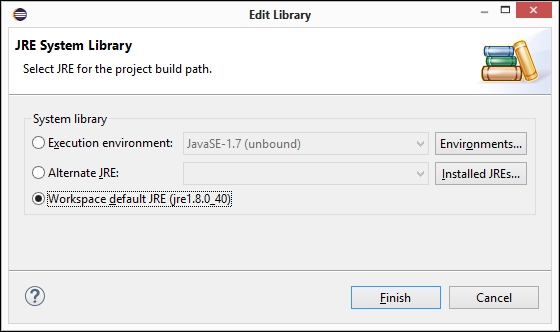The following are the steps to import a project in Eclipse:
To import a project that is already developed in your Eclipse IDE, navigate to File | Import.
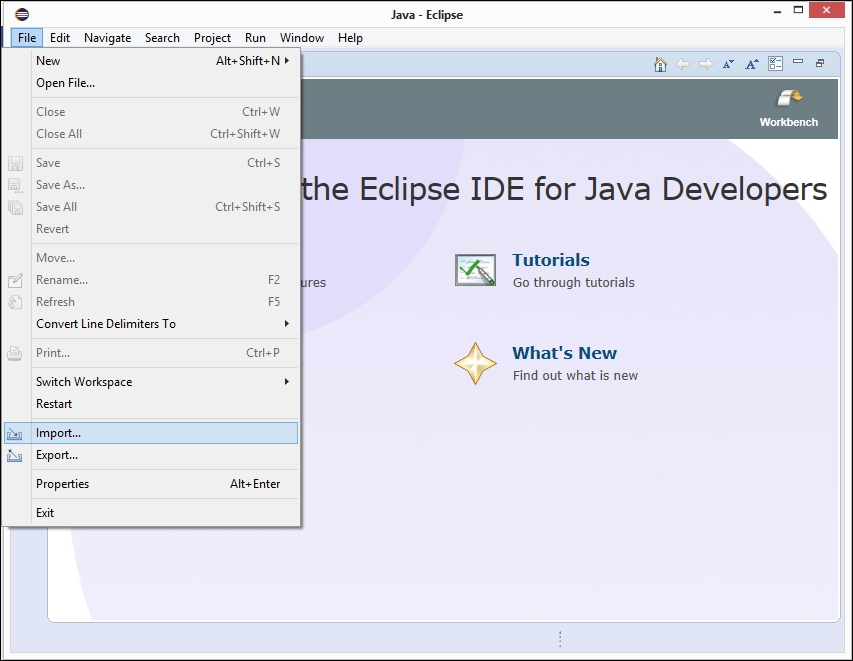
After the import prompt is displayed, you should expand the General option, choose Existing Projects into Workspace, and click on the Next button.
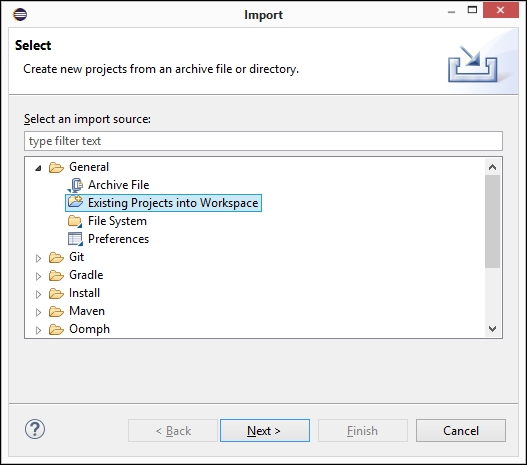
Now, click on the Browse… button to search for the project unzip folder. After that, do not forget to mark the Search for nested projects option and click on the Finish button.
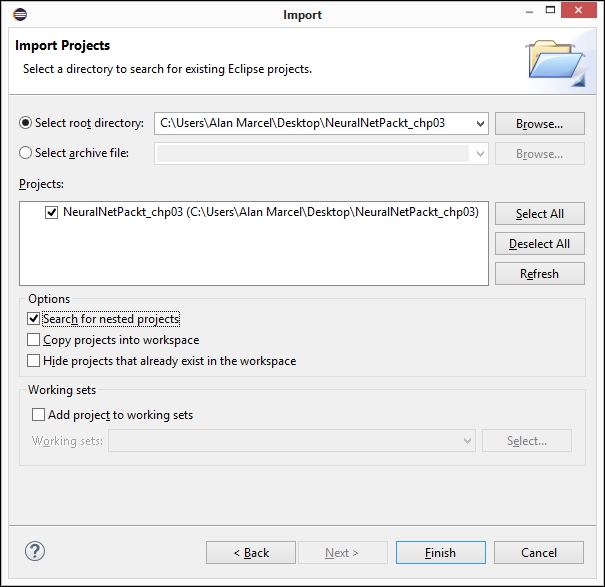
In this step, you should close the welcome screen, and you will see in Package explorer the project you've imported to Eclipse.

If you see a JRE version error, you should open the Problems tab. Right-click on Unbound classpath container…, and choose Quick Fix. The next screen will be exhibited.
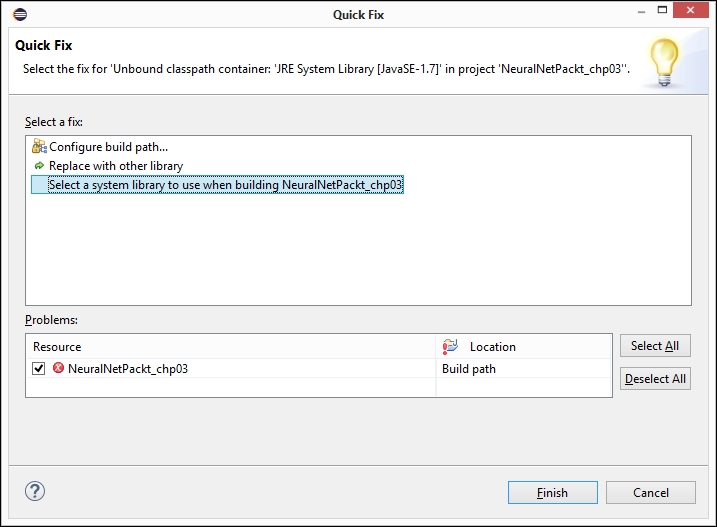
Now, click on the Select a system library to use… option and the Finish button. The Edit Library window appears, and you should select the Workspace default JRE (jre1.8.0_40) option then and click on the Finish button.
